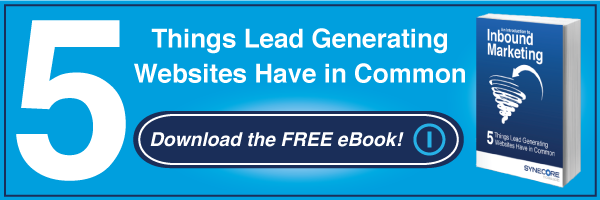 Most experienced marketers agree that a business blog is an extremely useful tool to expand online reach, build brand loyalty, and generate leads online. According to Social Media Examinar's 2012 Social Media Marketing Industry Report, 79% of marketers with over three years of experience use blogging as a social media marketing tool. Whether you're just getting started or need to revamp your approach, here is a proven four-step formula your business can use to reap the many benefits of blogging:
Most experienced marketers agree that a business blog is an extremely useful tool to expand online reach, build brand loyalty, and generate leads online. According to Social Media Examinar's 2012 Social Media Marketing Industry Report, 79% of marketers with over three years of experience use blogging as a social media marketing tool. Whether you're just getting started or need to revamp your approach, here is a proven four-step formula your business can use to reap the many benefits of blogging:
(DEFINE+LISTEN+ADDRESS) X (COMMUNICATE) = BLOGGING SUCCESS
Clearly define your target audience, listen to them, and then communicate solutions that address their pain points in a simple, concise and relevant way.
DEFINE ' Develop Buyer Personas
Create a demographic profile for each buyer persona. Flesh out personal details, such as gender, age, income and education level, marital status, and children. Speculate on any hobbies, pursuits, and personal interests to give you personas a three-dimensional feel.
Expand on employment information. Create data points for industry, department, specific role within the organization, and level of seniority.
Finally, speculate on each persona's information acquisition and consumption habits. Do they prefer nline search, social networks, books, newspapers, or trade papers? If yes, which ones? Try to be as specific as possible- the more detailed your buyer persona, the more effective your blog.
LISTEN ' Understand Needs and Motivations
If your business is selling a product or service (which for your sake I hope is the case), take a moment to think about the needs and motivations of your target market. What features and benefits are your buyers looking for? Make sure to think about this for each of your buyer personas. Moreover, what type of user experience (UX) is your buyer expecting to have when purchasing your product or service?
On the flip side, you need to anticipate objections. What issues or concerns would keep each buyer persona from purchasing your product or service?
To the extent that you can understand needs and motivations, and expose consumer objections, you can tailor various blog posts to address the interests and concerns of each persona within your greater target audience.
ADDRESS ' Solve Pain Points and Offer Value
Now for the nitty-gritty: how will your product or service resolve a problem, address a pain point, and/or ultimately provide value to your target audience? At his/her core, what does each buyer persona really value? What will get them excited to work with your brand? What are they trying to accomplish with this relationship?
Once you have a clear grasp of such fundamental buyer motivations, you can communicate how your product or service can solve their problems and add value to their lives. Blogging gives your brand a direct and relatively intimate platform to communicate with your target audience on a consistent basis.
COMMUNICATE ' Keep it Simple, Concise and Relevant
Clarity of message is the cornerstone of effective blogging. A simple structure and a clear proposition make for the most compelling posts. Most readers are looking for useful insight they can easily digest in one sitting. The best blog posts are usually 400-800 words in length. Make sure each post is in some way relevant to your target audience: resolve, inform or entertain. Tie your product or service into each blog topic, being mindful of the buyer persona(s) you are trying to reach.
In an increasingly crowded Internet, a well-crafted business blog can provide real value to your target audience. In time, this will translate into more web traffic, leads and sales for your brand.
Follow @chrshorton
Follow @SyneCoreTech

This article is an original contribution by Chris Horton.
Find out how you can become a part of Business 2 Community.
0 komentar:
Posting Komentar